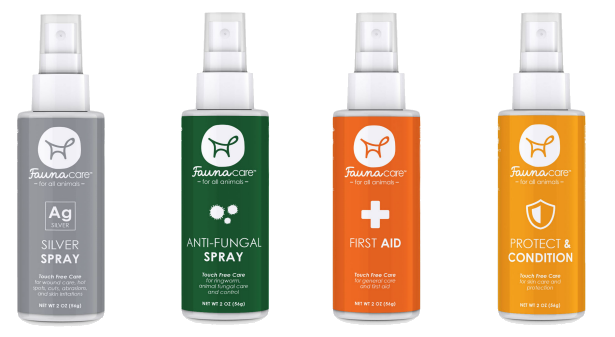Accidents happen, and our four-legged friends, unfortunately, are no exception. Maybe Fido scraped himself on the hiking trail, or got tripped up during a game of chase at the park. No matter the circumstance, these tips and tricks will help get your buddy ready for a round of fetch in no time.
When in Doubt… Call the Vet!
Your veterinarian will consider the cause, location, and level of contamination when deciding the best course of treatment for your dog. For large, wide wounds, they may decide to suture the cut shut to promote healing. Or, they may advise you to care for the wound at home, giving specific directions that should be followed with care.
There are a few circumstances in which a vet should be called immediately. An injury that fully penetrates the skin, like a bite or deep laceration, requires the help of a professional to heal correctly. Wounds that cover a large area also need to be seen by a vet, as greater size increases the potential for further injury.

The Four Stages of Healing
The four stages of healing are inflammation, debridement, repair, and maturation. Read on for a breakdown of each phase, as well as warning signs of infection, and ways to help your pup make a full recovery!
Inflammation
During this stage, your dog’s body will work to slow the flow of blood, and activate the immune system. Common symptoms of inflammation include:
- Swelling
- Pain
- Redness
- Loss of function or immobility
At this stage, you should keep an eye out for signs of infection.
- High fever - though an increase in temperature is normal, an unusually high fever could warrant a trip to the vet
- Red streaks - excessive redness around or radiating from the wound are also a cause for concern, as it could signal an infection called lymphangitis
- Discharge - while clear or white liquid is completely normal, greenish-yellow discharge is a sign of infection
- Bad smell - a sickly sweet smell coming from the discharge or wound itself is another common symptom of infection
Debridement
After a few hours, your pup’s body will begin clearing the wound of dead tissues and cells, killing off bacteria in the process. This phase also involves the formation of pus, which is meant to carry debris out of the body.
If dark, blackened tissue forms around the wound, immediately make a call to your vet. Dead tissue inhibits the healing process, meaning your pup’s wound will take longer to heal.
Repair
If the wound seems to be healing well and shows no sign of infection, the cells will naturally grow over the laceration and rebuild tissue. For wounds closed via surgical incision, you’ll notice new tissue growing towards the edges. With larger, open wounds, layer after layer of skin grows from the bottom upward - filling the sore until it’s healed.
Maturation
At this stage, your dog should begin acting like his old self: chasing his tail, sitting for treats, and other behaviors you’d expect for a pup on the mend. During this stage, you may notice a scar beginning to form. Scar tissue hardens over time, and will be a bit sensitive at the beginning of formation. For this reason, you should be especially cautious when letting your pup play, lest re-injury occur.

How to Heal an Open Wound
In the event of an emergency you should always keep the following supplies on-hand, allowing for quick first-aid instead of a trip to the store:
- A razor (electric is preferred, but handheld razors can be used when exercising extreme caution)
- A water based lubricant like KY Jelly (avoid vaseline)
- Lukewarm water
- Paper towels and/or a clean cloth
- Antiseptic
- An antimicrobial ointment
Step One
First, you must prepare the wound for cleaning. If the wound is covered by hair, gently clip the area surrounding the cut, wiping the remains away with a clean paper towel. Experts suggest coating the hair around the site with water-based lubricant, so that the loose hair will stick when wiping it away.
Step Two
Next, rinse the wound. Using warm water, clean the area until all visible debris has been irrigated. After, pat the site dry with a clean cloth or paper towel.
Step Three
Following irrigation, apply an antiseptic to the open site. Chlorhexidine is a great alternative, as it is both cheap and widely available.
Step Four
After applying an antiseptic, apply an antimicrobial ointment or spray. Consider FaunaCare Silver Spray, which is perfect for cuts, abrasions, and open wounds.
Step Five
Further, you should keep your pup’s tongue away from the wound, as it can cause injury to the site. While many people (falsely) believe a dog’s saliva is antiseptic, this is not the case. Your vet may recommend a protective collar to inhibit unwanted attention. Or, you can apply a light, loose bandage to prevent licking. Be sure to change the dressing frequently and monitor as necessary.
Step Six
While these steps generally prevent infection and expedite the healing process, be sure to check your pup’s wound two to three times a day for about a week. If the cut fails to resolve itself within a week, it’s a good idea to contact your vet and discuss the healing process further.





